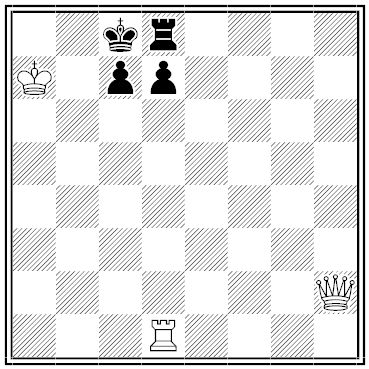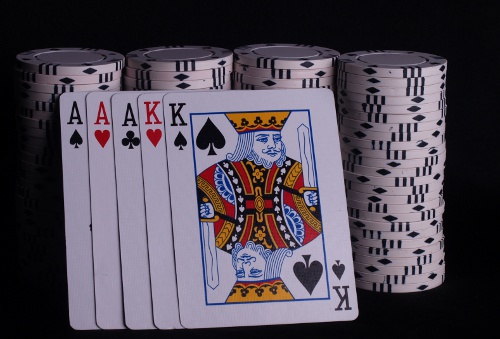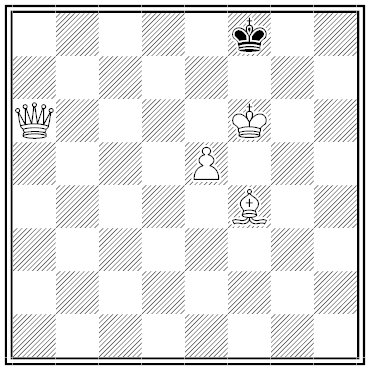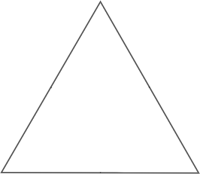
Future world chess champion Max Euwe composed this miniature in 1927. White to mate in two moves.

Future world chess champion Max Euwe composed this miniature in 1927. White to mate in two moves.
You have 100 coins totaling $5.00. They consist of pennies, dimes, and half dollars. How many of each are there?

What is the best full house? Suppose you are playing poker and a genie offers to arrange the deal so that you receive the full house of your choice. What hand should you specify?
The law in a certain village requires that any wife who can prove that her husband has been unfaithful must shoot him before sundown on the same day. Every wife reasons perfectly, and all the wives know this. Further, every wife knows instantly when another’s husband has been unfaithful but never whether her own is.
One day the mayor announces that there is at least one unfaithful husband in the village. In fact there are 40 unfaithful husbands, but the wives do not know this. What happens?

Three flying saucers land simultaneously on a spherical planet.
What’s the probability that all land in or on the same hemisphere?

By Joseph Kling, from Chess Euclid, 1849. White to mate with the pawn in three moves.

Five points are located in an equilateral triangle with 10-inch sides (or on its perimeter). What’s the maximum distance between the two closest points?
A magician invites me to do the following:
Now, after a period of mysterious activity under the table, he places his pack of 20 cards next to mine of 32. Using the dark arts, he says, he has arranged that both packs now contain the same number of face-up cards. We count, and they do. How has he accomplished this?